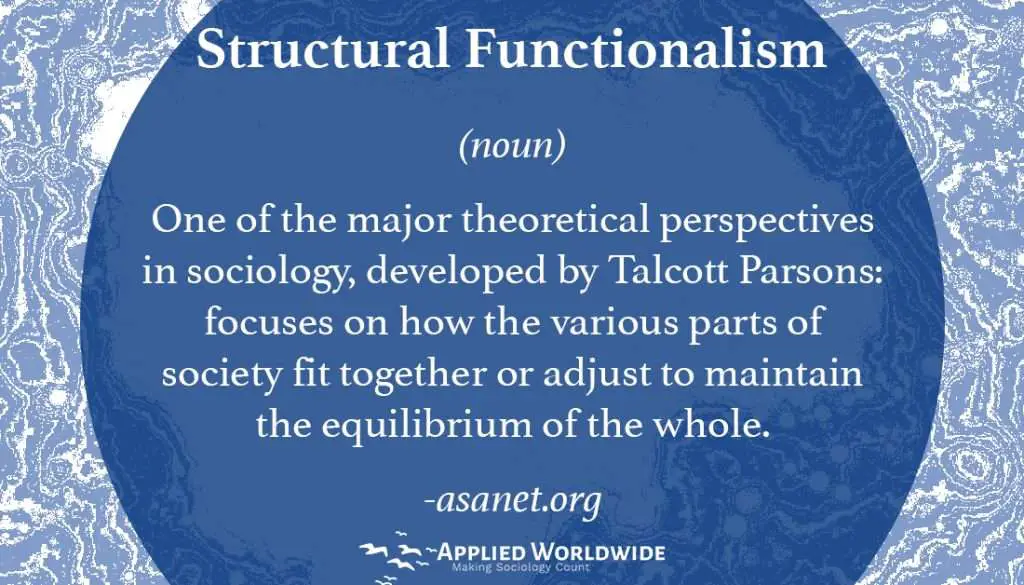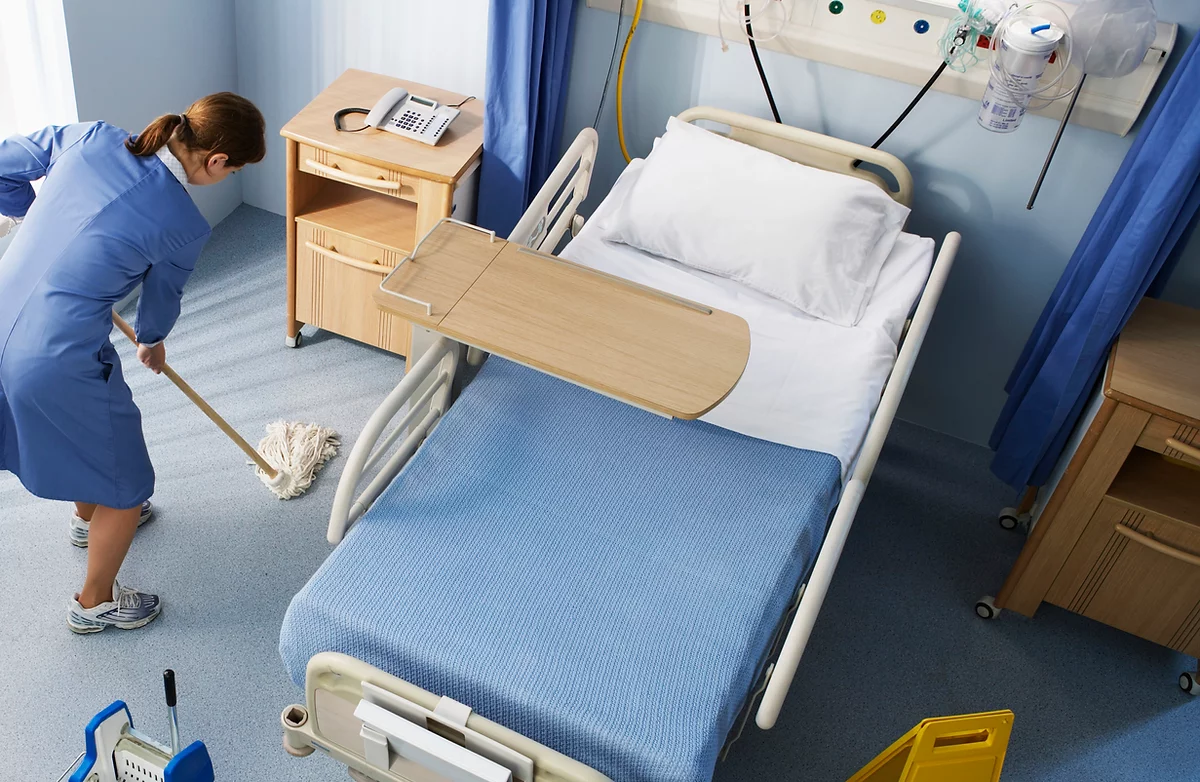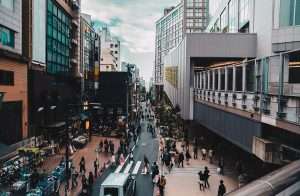Social Solidarity
Émile Durkheim, one of the early and influential voices in sociology, wrote extensively about social solidarity. In his book The Division of Labor in Society, Durkheim categorized social solidarity into two forms. One form, mechanical solidarity, relies on similarities between members of society and a collective conscience.
The second form, organic solidarity, relies on the division of labor and each member’s dependence on one another. For the most part, hospitals are able to maintain mechanical solidarity through a collective conscience that includes a collective moral goal: patient safety.
Functions and Roles in Hospitals

Even though hospitals have many different departments—as well as different responsibilities within each department that keep the hospital functioning properly towards its goal of keeping people alive and healthy—I argue that the hospital I worked at functioned as a result of mechanical solidarity. However, in my time there, external threats emerged causing chaos in the system and disrupting order.
As a first year Ph.D. student taking a classical sociological theory course, I wrote a theory essay exploring how Durkheim’s ideas on social change apply to my experiences working in a hospital during a time of external threat. Given the external threats that healthcare workers are facing with supply shortages, the ongoing threat of the novel coronavirus, and patient overflow, I have decided to revamp that essay to shed light on the importance of understanding social solidarity in the hospital.
Mechanical Social Solidarity
For over three years, I worked as a “Room Service Associate” at North Colorado Medical Center (NCMC). My specific roles within the Food and Nutrition Services (FNS) department included delivering meals to patients, picking up dirty food trays from the various floors/units in the hospital, preparing food for patient meals, and washing dishes used for food preparation and patient meals. However, my primary role as a member of the hospital staff—and a role I shared with every employee at the hospital—was to maintain patient safety.
My job as a food service worker began with a general orientation through the organization that runs the hospital, Banner Health. All newly hired employees from all specializations were assembled together to learn the general laws of the land. On this day, all new employees were treated like healthcare workers, whether they were going on to clean patient trays, mop floors, or perform surgeries in the OR. I was initiated to my job at the hospital with nurses, doctors, medical students starting residency, environmental services workers (e.g., housekeeping and janitorial staff), human resource employees, and many other specialized staff.
We are all Healthcare Workers
Although we were all treated as working towards one goal, to keep the hospital safe for patients and employees, we all knew that we would go on to work in our specialized departments and perform our specialized tasks. Regardless of this reality, a common moral conscience was ingrained in us on those orientation days. We were continuously told that we all essentially played the same role in the hospital and that we were all equally important in reaching the common goal of hospital safety. Despite us all being specialized in different areas, the hospital socialized us to believe we all played the same role and served the same purpose.
The hospital made a concerted effort to convince the FNS department that we were healthcare workers. We were constantly told that by doing our part to keep patients healthy, we were playing a major role in the healthcare work of the hospital. One specific example of how we were reminded of our importance in the system is Banner Learning Center (BLC) courses. All employees had to complete annual BLCs—online modules and tests—where we were all addressed as “healthcare workers” and reminded of our role in the overall goal of the hospital: patient safety.
The management in our department also continuously reminded us that by performing cleaning chores properly, adhering to food safety regulations, and properly sanitizing our hands before entering patient rooms, we were participating in a culture that would keep the hospital safe for patients. Because we were involved in this culture, we must also be healthcare workers.
Collective Conscience
It did not take long for the FNS department to convince me that even though I was just a food service worker, I was still a healthcare worker. By treating us all as though we had the same general task and role, the hospital system was able to function based on this shared moral conscience, or what Durkheim called a collective conscience. Because our goal took a moral stance of keeping patients, each other, and others who entered the hospital safe, it was easy to maintain our collective conscience as changes materialized and the organization evolved.
The moral training in our shared role of healthcare workers who aimed to keep people safe served the function of sustaining social solidarity, which held the hospital staff together. Durkheim might even say the hospital was the ideal form of mechanical solidarity in that hospital workers share a moral collective conscience to keep the hospital safe.
At this point in my time at the hospital, we—as food service workers—had not yet begun seeing ourselves as specialized workers in a specialized department. We still saw our department as one that consisted of healthcare workers, as did every other department, contributing to the overall functioning of the organization. In this sense, the entire hospital worked in solidarity, and as external threats emerged the organization was, for the most part, able to compensate for any threats to that solidarity in order to find harmony again.
However, one threat did emerge that transformed the solidarity during my time as an employee at NCMC. This threat was optimization.
The External Threat
In his writings on social solidarity, Durkheim wrote specifically about the shift from mechanical solidarity to organic solidarity. This shift, he said, happens “because societies become regularly denser and generally more voluminous.” He explained this idea as the “moral or dynamic density of society,” which can be understood as an increase in the amount of social relationships due to people being closer in space and having the ability to communicate more easily across space. Additionally, Durkheim argued, “the growth and condensation of societies…necessitate a greater division of labor.”
Although the actual population of workers in the hospital did not increase during optimization, the moral density did, allowing for social relationships through proximity and communication to progress.
What was Optimization?
Optimization was an effort brought in by hospital administration to optimize the financial efficiency of the hospital through various budget adjustments. Each department was affected by this optimization in one way or another whether it was cut hours, a loss of yearly bonuses, cheaper equipment, or some other financial compromise. Additionally, each department was required to discuss the optimization efforts in mandatory staff meetings.
What optimization did at NCMC was bring departments closer together. This created an increase in moral density, or social relationships, leading to a disturbance in the collective conscience. Employees were under the impression that we all had one common goal to keep the hospital safe, but optimization exposed a different goal for administration: to cut costs. When employees across departments were brought together and formed social relationships as a result of this cross-departmental communication through optimization, they realized that the collective conscience they thought to be true was not actually collective.
Are we all not Healthcare Workers?
All of a sudden, optimization became the lunchroom talk between employees, especially between support staff such as food service workers, housekeeping, and others. Many of us asked, “if our understanding that we are all healthcare workers with a goal to keep the hospital safe is false, does that mean we are not actually healthcare workers at all?”
It is my impression that doctors, nurses, and other healthcare providers did not have this same epiphany because their jobs were so clearly oriented in healthcare for patients. However, support staff began to question their purpose in the collective and wonder if they were actually a part of the common goal to keep patients safe.
This change in perspective, brought on by increased moral density through communication across departments—including communication between administration and support staff—left the hospital system unable to return to a state of equilibrium through the same means as before. Therefore, the system had to change in order to reach a harmonious state once again.
The Shift to Organic Social Solidarity
Durkheim argued that an external threat of moral or dynamic density would result in “a greater division of labor,” which is exactly what happened during my time at the hospital. My time there consisted of a year of working in mechanical solidarity, a year of trying to find harmony in the system again after the external threat of optimization, and a few months where organic solidarity began to set in.
After optimization, the FNS department management did not continue to push the idea that the hospital was a collective group of healthcare workers who were pursuing the same goal. It was understood that this collective conscience was lost and that we must try to reach a state of equilibrium in other ways.
At this time, the administration also decided to remodel the entire kitchen and cafeteria. During the long remodel of the kitchen, the FNS department lost a lot of workers. I argue that the workers who quit, and those who were newly hired and quit soon after, left because they had no feeling of solidarity while the system was slowly shifting from mechanical to organic solidarity. There was a very high turnover rate in our department, and although I cannot definitively say that optimization was to blame for that loss of solidarity, from my observations and experience, I confidently argue that was the case.
Specialization and Division of Labor
The management of the FNS department also shifted drastically during the optimization. Management moved from a registered dietitian who had been there for almost a decade to someone whose experience was in food service. Leaders also shifted from dietetics students or interns to food service workers who had simply been there long enough to make the cut for a leadership position.
The department was now run by specialized food service workers rather than those whose specializations concerned healthcare (i.e., registered dieticians and those studying to become registered dieticians). This shift in management also contributed to the shift to organic solidarity. Not only did management no longer treat us as healthcare workers, but they also no longer saw themselves as healthcare workers, contributing to the shift away from a previous collective conscience. The change in management is what ultimately allowed a complex division of labor to set in and organic solidarity to form.
By the time I left, there was still change happening and that was very evident. There was still a high turnover rate, but the FNS department felt much more like a department dedicated to feeding patients and employees rather than a department dedicated to patient safety. I can personally say I stopped caring about my role in patient safety because I felt that patient safety was no longer my specialization. My role became specialized as someone who cut, wrapped, and dated cakes and pies and someone who simply delivered food to patients. I did not always sanitize my hands before I entered patient rooms, and I can say the same about many of my coworkers.
Finding Equilibrium
By the time I left, the collective conscience—and mechanical solidarity—was lost, and the division of labor—and organic solidarity—was steadily emerging.
In summary, the mechanical solidarity in the hospital that was prominent when I began working there was threatened by optimization that caused moral density. By moral density, I primarily mean the “rapidity of ways of communication” across departments and between administration and the rest of the hospital, which was brought on by optimization. This communication disturbed the collective conscience, requiring the system to find another form of solidarity to remain functioning efficiently.
The hospital system eventually figured out that if “they perform different services, they can perform them parallelly.” That is, even if we are not all “healthcare workers” and we specialize in separate tasks, each department can still co-exist in harmony and the hospital can function properly. Despite of the traumatic shift away from mechanical solidarity, the hospital was able to remain functioning through a complex division of labor that resulted in organic solidarity, demonstrating Durkheim’s theory of social change.
Why is Social Solidarity Important in the Hospital?
I felt compelled to share this essay at this time for two important reasons. First, hospitals around the world are undoubtedly facing external threats from the global pandemic—whether it’s the pandemic itself we are considering the external threat or the social and political division that has resulted from it. Perhaps this account of how one hospital dealt with one external threat may help hospitals adjust to the pandemic accordingly.
Second, I see discourse emerging to remind us that it is not only nurses and doctors putting their health and lives on the line to go to work every day and fight this pandemic. Those with constant patient contact are undeniably most at risk, but food service workers and other hospital support staff are also showing up to work every day. And now, perhaps more than ever, their role in maintaining safe hospital environments cannot be overlooked.
If you are working in a hospital, I urge you to think about how the current external threats are impacting solidarity among hospital workers. How is that potential shift in solidarity impacting the safety of the hospital environment? And how might the case of shifting solidarity that I have outlined here help hospitals preserve safety for patients and staff at a time when it is of utmost importance?
Frequently Asked Questions about Social Solidarity
- What is social solidarity and why is it important in society?
- Social solidarity refers to the sense of unity, mutual support, and shared values among individuals within a society. It is crucial for fostering cooperation, resilience, and a sense of belonging, contributing to the overall well-being of the community.
- How does social solidarity differ from other forms of social cohesion?
- Social solidarity specifically emphasizes a collective commitment to common goals and values, whereas social cohesion may refer more broadly to the overall connectedness and stability within a society.
- What are some examples of social solidarity in action?
- Examples of social solidarity include community volunteering, support networks during times of crisis, collective efforts to address social issues, and shared participation in cultural or civic events that strengthen a sense of unity.
- Can social solidarity exist in diverse and multicultural societies?
- Yes, social solidarity can exist in diverse societies when there is a recognition and appreciation of cultural differences, coupled with a shared commitment to fundamental values such as justice, equality, and human rights.
- How does social solidarity contribute to social justice?
- Social solidarity is closely linked to social justice as it promotes a collective responsibility for addressing inequalities, advocating for fair policies, and ensuring that the well-being of all members of society is considered.
- What role does education play in fostering social solidarity?
- Education plays a significant role in fostering social solidarity by promoting understanding, tolerance, and empathy. Educational institutions can instill values of cooperation and social responsibility, contributing to a more cohesive society.
- Is social media a tool for promoting or hindering social solidarity?
- Social media can play both positive and negative roles in social solidarity. While it can facilitate communication and the spread of shared values, it also has the potential to amplify divisive narratives and contribute to social fragmentation.
- How can individuals contribute to building social solidarity in their communities?
- Individuals can contribute to social solidarity by actively participating in community events, supporting local initiatives, fostering open communication, and advocating for policies that promote inclusivity and social cohesion.







